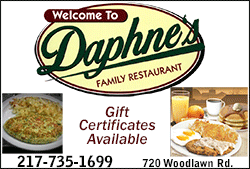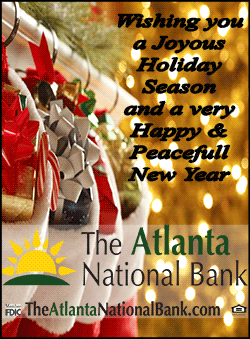|
What we often leave out is the idea that these
people in a new world were there for religious reasons. They had
fled from England because the English practice of Christianity and
church was being forced upon them, and they found it distasteful.
But, it should also be noted, that on the voyage of the Mayflower,
only about half of the passengers were truly coming to America for
religious freedom. The others were a motley mix of thieves, thugs,
and restless people who were curious for a new world and perhaps saw
it as a way to make great wealth.
The voyage, off to a late start, cost many lives along the way. The
passengers grew ill and because they were packed so closely together
in the holds of the ship, the illnesses spread, few were spared
sickness and many died at sea.
While many of the pilgrims, especially those seeking fame and
fortune thought that they would be traveling to the land of milk and
honey where food fell off trees and into their hands by the bushel
and the land was rich and productive, they found that expectation
was not correct.
Landing in the midst of winter, the hardships the pilgrims faced on
land were almost as severe as the hardships they suffered on the
Mayflower. Death rates continued to soar. By spring, the number of
people settling in the Plymouth area was reduced by half of what had
left England the summer before.
The Mayflower sailed in the late summer-early fall of 1620, and
arrived in America early in the year 1621.
The Pilgrims were afraid of the Indians (or as we call them today
Native Americans), and had heard that the “savages” hungered to put
them all to death. Therefore, when they were approached by friendly,
English speaking Squanto, they were stunned. The friendship with the
Indian helped the Pilgrims in many ways, and in that first fall on
land, they called together a great celebration to acknowledge that
they had been blessed in America, had survived and even thrived in
that first year.
That celebration probably did not occur in late November 1621, but
perhaps weeks earlier, before severe cold weather set in. Historians
are unable to pinpoint the exact date, but estimate the feast
occurred sometime between mid-September and early November and
lasted a number of days.
Edward Winslow was one of the “firstcomers” as they called
themselves. He wrote letters back home to friends left behind in
England. In one such letter he wrote of that first feast.
“Our harvest being gotten in, our governor
sent four men on fowling, that so we might after a special manner
rejoice together after we had gathered the fruits of our labor. They
four in one day killed as much fowl as, with a little help beside,
served the company almost a week. At which time, amongst other
recreations, we exercised our arms, many of the Indians coming
amongst us, and among the rest their greatest king Massasoit, with
some ninety men, whom for three days we entertained and feasted, and
they went out and killed five deer, which we brought to the
plantation and bestowed on our governor, and upon the captain and
others. And although it be not always so plentiful as it was at this
time with us, yet by the goodness of God, we are so far from want
that we often wish you partakers of our plenty.”
According to Winslow’s words, the greatest amount of meat on the
tables that first feast was venison. The men hand also hunted for
fowl, but it was most likely not turkey as according to New England
Today. More than likely the fowl was duck and goose. Though not
mentioned in Winslow’s letter, fishing was a popular way to provide
food and mussels and shellfish were plentiful along the shores of
the Atlantic Ocean.
So, probably no turkey. Instead, there was venison and fowl and
possibly some shellfish. There were no potatoes or sweet potatoes as
neither the Indians nor Pilgrims grew those foods.
Instead, they grew corn and beans, onions, pumpkins and squash. They
also harvested the fruits of the forest, nuts and berries.
Cranberries grew wild in the forest so that particular Thanksgiving
staple may well have been on the table in some form.
So, how is it that today, turkey became the foundation of most
Thanksgiving meals? According to Britannica.com that may be due to a
book written by Sarah Joseph Hale in 1827. In her novel “Northwood”
she devoted a chapter to that first Thanksgiving feast and referred
to the turkey placed at the head of the table.
So, why did people all assume her words were correct? According to
Britannica, the Pilgrims did not see that first feast as the
significant affair that we do. For the English a feast celebrating
the harvest was a common thing, and no one saw it as anything extra
special. In fact, the only account of that actual feast on record is
that of Edward Winslow.
In addition, Hale was an influencer. She was the one who first began
trying to get Thanksgiving named as a national holiday. She did so
to try and bring a new unity to the American people, as this was
just prior to the Civil War, and unrest within the country troubled
Hale, as it did others. Her work paid off in 1863, when President
Abraham Lincoln declared Thanksgiving a national holiday or
observance.
 Other opinions say that indeed turkey might well
have been a part of that first meal. Though Winslow’s account is the
only one of that first harvest feast, William Bradford another
first-comer on the Mayflower did record in his journal “a great
store of wild turkeys” in Plymouth. Another
thing we do know about that first year in Plymouth is that flour was
not a commodity the Pilgrims had access to in abundance. What flour
they had was used sparingly. So, there is no evidence that there
were pies, noodles, or even gravy. Flour would have been saved for
making bread. Also, the Pilgrims and Indians alike did raise corn,
and corn as a vegetable would have been served, and ground corn
could have been used to make biscuits and puddings.
[to top of second column]
 |

In 2003, 'New England Today' visited Plimoth Patuxet
(formerly known as Plymouth Plantation), a living history museum
that documents the life and times of the Pilgrims. After conducting
their research they reached out to writer Jane Walsh, and asked her
to come up with some traditional first Thanksgiving recipes.
Here are some of those “historically inspired” recipes:
Chestnut Croquettes
https://newengland.com/recipe/chestnut-croquettes
Yield: Serves 6
Ingredients
2 cups hot mashed chestnuts
4 tablespoons butter
2 eggs
salt and pepper
2 tablespoons minced onion
1 egg
Breadcrumbs
Instructions
Mix the chestnuts, butter, 2 eggs, slightly beaten, and seasonings.
Shape into croquettes, roll in crumbs, then in beaten egg, and again
in crumbs. Fry in deep hot fat (375-39O degrees F) until the crumbs
are brown-2-5 minutes.
New England Succotash Recipe
New England Succotash Recipe - New England Today
A combination of cranberry beans and corn kernels, succotash was one
of the first foods that the Native Americans of coastal New England
shared with the Plymouth settlers. Rich in nutrients and inexpensive
to make, it was especially popular during the Depression and World
War II. This bean and corn succotash recipe is especially nice in
summer.
Note: Cranberry beans are closest to the type of bean that
would have originally been used in this dish, but fresh or frozen
lima beans are a popular substitute.
Total Time: 20
Yield: 6 to 8 servings
Ingredients
6 ears fresh corn
4 tablespoons unsalted butter, divided
3 pounds fresh cranberry beans or fresh or frozen lima beans,
shelled (see Note)
1/8 pound salt pork, cut into 4 pieces (optional)
1/2 small onion, minced
2 teaspoons granulated sugar
Kosher or sea salt and freshly ground black pepper, to taste
1/4 cup heavy cream (optional)
Instructions
Use a sharp knife to cut the kernels from the cobs and set aside.
In a large saucepan over medium heat, melt 1 tablespoon butter. Add
the beans, salt pork (if using), and onion. Cook, stirring often,
until the beans are tender and the onion is golden, about 10
minutes.
Stir in the corn and add enough water to cover by 1/2 inch. Add the
sugar and remaining 3 tablespoons butter. Bring to a gentle bubble
and cook, uncovered, for 10 minutes.
Remove the salt pork and season with salt and pepper. Add cream, if
desired. Serve hot.
 -----
While no one is suggesting that we
give up our traditional Thanksgiving meal with turkey, mashed
potatoes, sweet potatoes, noodles or gravy or both and an abundance
of pies, it might be fun to this year add one of those original
recipes to your holiday table.
Remember, shellfish was a part of the menu also, add some shrimp,
crab, or oysters to that table as well.
Finally, you need no longer feel lazy if you open a can of mixed
nuts and pour them in a bowl for the table. Just tell your guests
you are following the path of that first Thanksgiving in 1621!
Regardless of what you eat Thanksgiving Day, please take time to
remember why you are eating it. Thanksgiving is a time to celebrate
family, friends, prosperity and religious freedom. Regardless of how
you worship, those firstcomers are the ones who made it possible for
you to do so freely.
Why Do We Eat Turkey on Thanksgiving? | Britannica
What Did the Pilgrims Eat at the First Thanksgiving? - New England
Today
Exploring PlimothPatuxet | A New England Living History Museum - New
England Today
 |